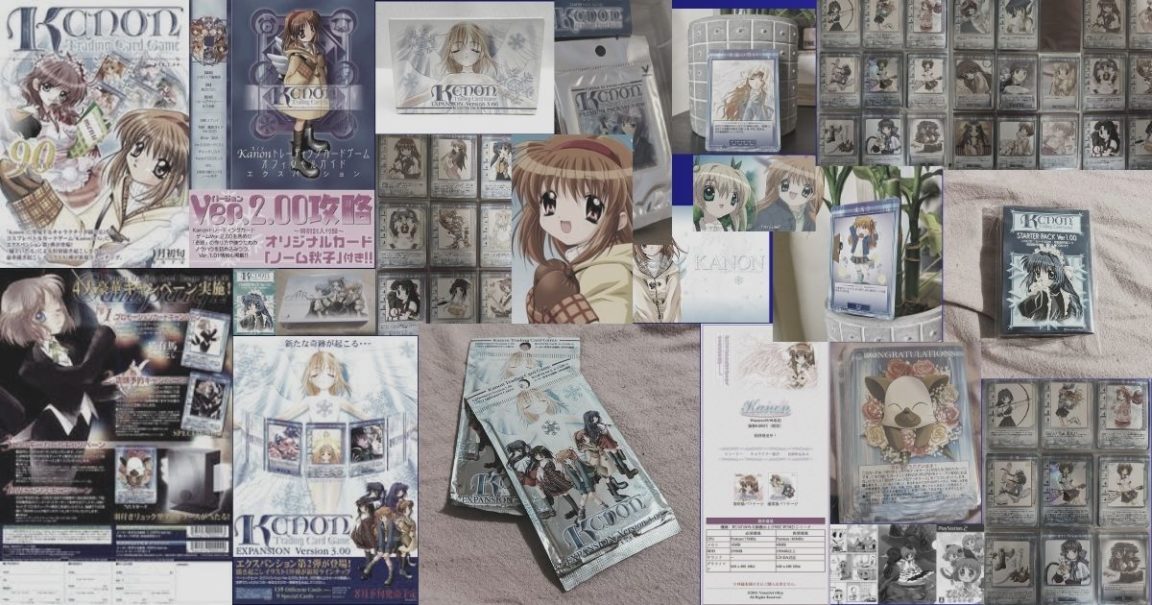“A dream… I’m dreaming a dream… A dream I dream every day… An endless dream…”
~ Ayu Tsukimiya, Kanon
This quote, which opens the first episode of Kanon’s original 2002 anime adaption, is honestly how the buildup to writing an article like this has felt; dreaming a dream. As an avid collector, I’ve always had the drive to seek out the strange and obscure when it comes to media and merchandise. Whether it be Hasbro’s cancelled “rats wearing trash” doll line, Trashion Alley, or the bizarrely endless well of Madoka Magica collectibles and additional media, seeking out these strange little rabbit holes like the Kanon Trading Card Game gives me serotonin in a way that little else does.
This makes me being an anime fan, for lack of a better term, fiscally dangerous. Anime is as much a vehicle for merchandising as it is an artistic medium in and of itself, and if you allow yourself, you can find depths deeper than you could have ever imagined for even the most obscure media. For example, have you ever heard of the manga series Binchō-tan from 2003? The comic is about a small girl with a piece of charcoal on her head going grocery shopping and doing other chores. No? How about the Binchō-tan anime that came out in 2006? No? How about the Playstation 2 game that came out in 2007 which also got a limited edition version?
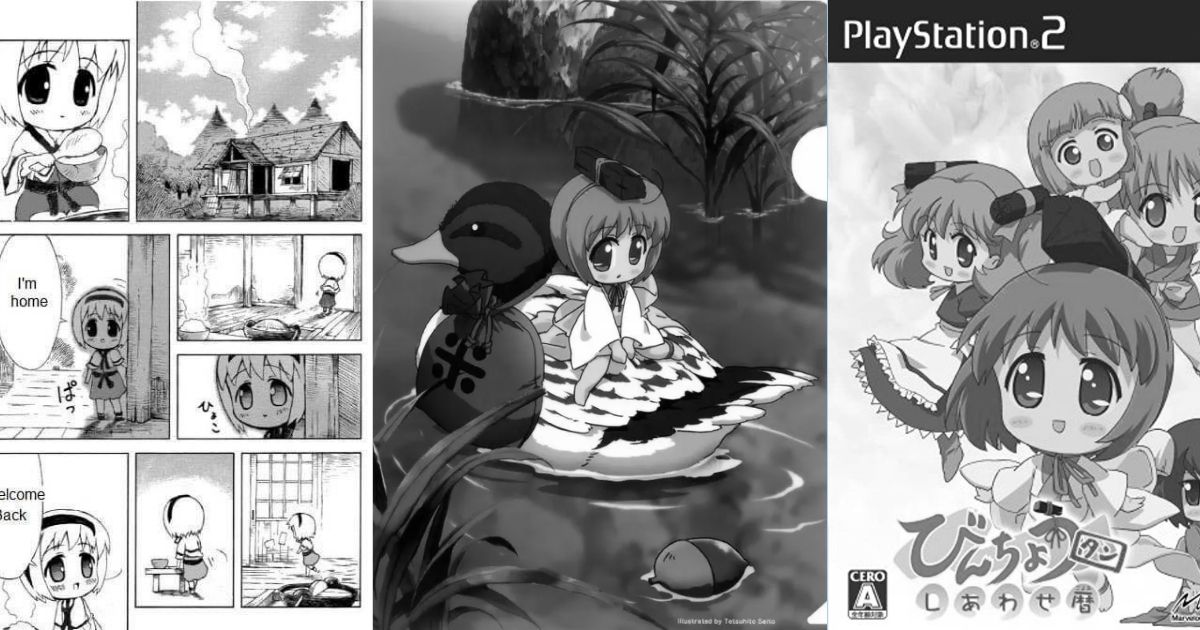
What I’m trying to say here is that for every piece of media in anime and manga, there will be more supplementary media and merchandise than you’d expect, even in cases where you wouldn’t expect an audience for it. So, for someone like me, with my particular kind of deep-diving obsession, finding a booster pack for a mysterious card game seemingly based on the 90s adult visual novel Kanon, the first work by acclaimed VN company Key/Visual Arts, is like striking gold and lighting a fuse at the same time.
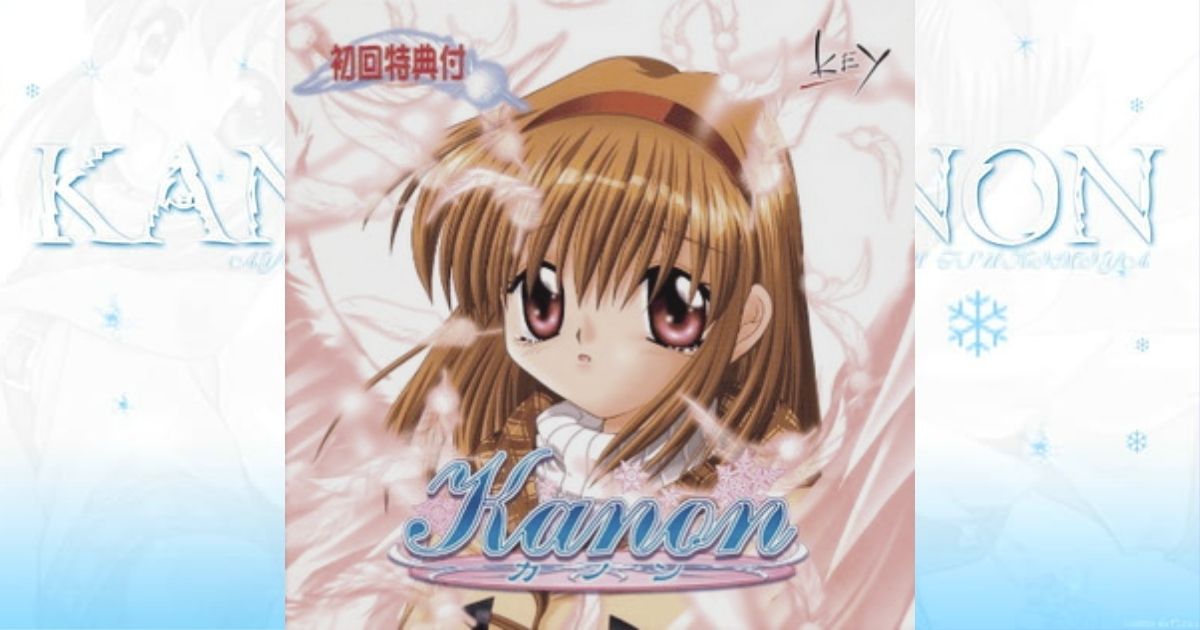
What is Kanon?
Developed by Key, the most recognisable brand under the VisualArts banner, Kanon is a seminal work in the visual novel genre of games. From its release in Japan on June 4th, 1999, it quickly became a staple of the genre and the blueprint for many works that would come after. Unlike many VN-style games of the early-90s, games like Kanon focused less on life sim and activity elements and far more on storytelling and character, allowing the player to spend time with and get to know a cast of heroines with their own mysteries and strong personalities. This style of gameplay blurred the idea of what could be considered a “game” in the traditional sense, with all interactions from the player coming down to a more “choose your own adventure novel” style rather than actual gameplay.
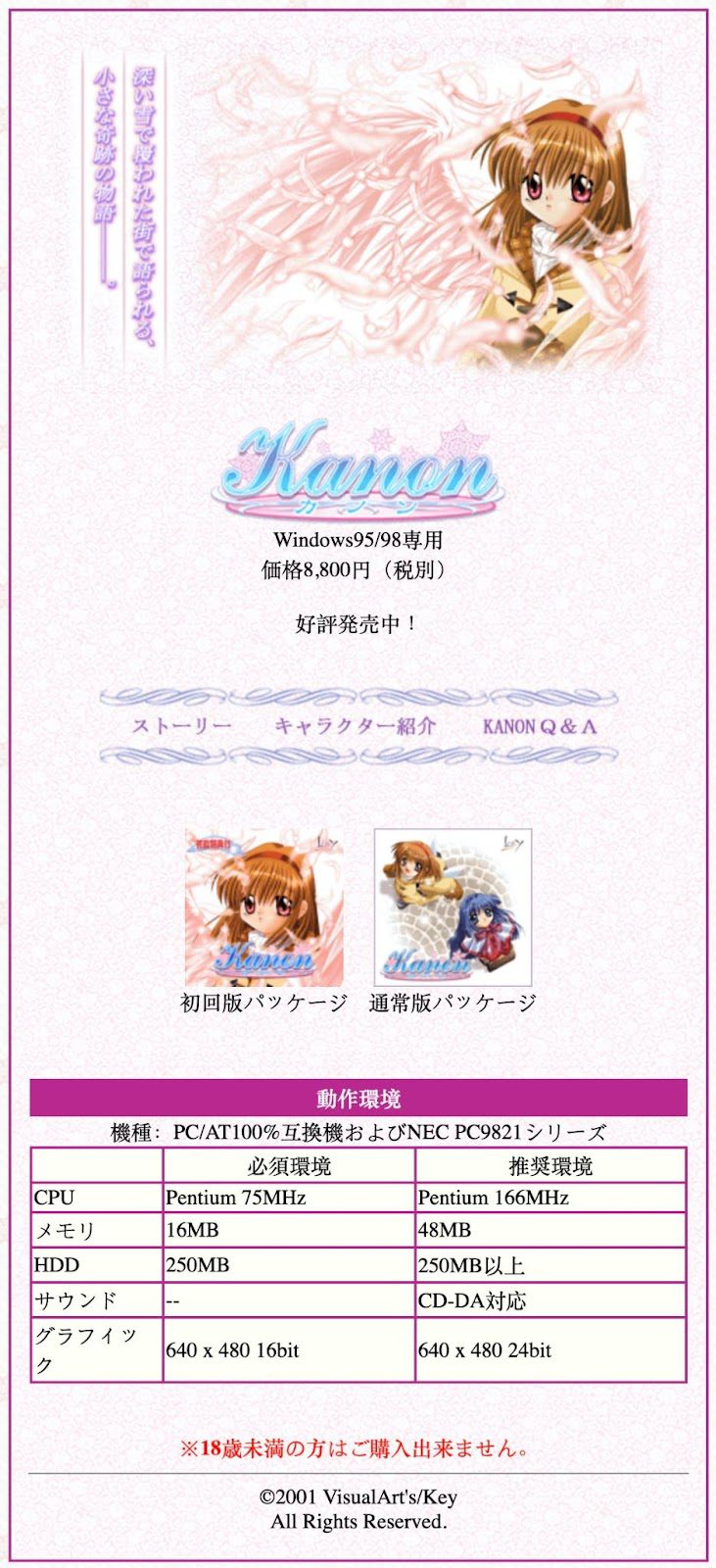
Whilst the original release was an eroge, or “erotic video game”, all erotic content was removed in subsequent releases, with scenario writer Yūichi Suzumoto (who was inspired by Kanon and would work on subsequent Key releases such as Air, Clannad, and Planetarian) commenting that the removed content was very self-contained, and could easily be removed with no change to the story whatsoever.

Releases of the Kanon Visual Novel
Despite seeing little to no representation in English, the original visual novel has seen a wealth of releases in japan since its original 1999 version. Later variants would keep much of the same content as the Kanon all-ages edition which would be released on January 7th, 2000. As of the writing of this article, the most modern iteration of Kanon is the upcoming Kanon release for the Nintendo Switch on April 20th, 2023. This version is likely to keep some of the quality of life changes from other handheld variants, such as the voice acting given to Yuichi in the February 15th, 2007 PSP release.
To this date, the Kanon visual novel has seen releases on:
- Microsoft Windows
- Dreamcast
- PlayStation 2
- SoftBank 3G (Mobile Phone)
- Freedom of Mobile Multimedia Access (Mobile Phone)
- PlayStation Portable
- Android (Smartphone)
- Blu-ray Disc
- iOS (Smartphone)
- Nintendo Switch (TBA)
With all that in mind, however, the original visual novel is obviously not the only Kanon-related media to see widespread release.
The Merchandising Canon of Kanon
The new accessibility offered by a family-friendly version of Kanon allowed it to spread out into a number of different formats and pieces of merchandise. This was helped in no small part by two different anime adaptions introducing Kanon to a global audience. There was 2002’s Toei Animation adaption which, despite being helmed by the studio behind One Piece, Sailor Moon, Slam Dunk, Yu-Gi-Oh! and more, is now remembered more for 2000s internet memes based on its less-than-stellar use of, well, faces:
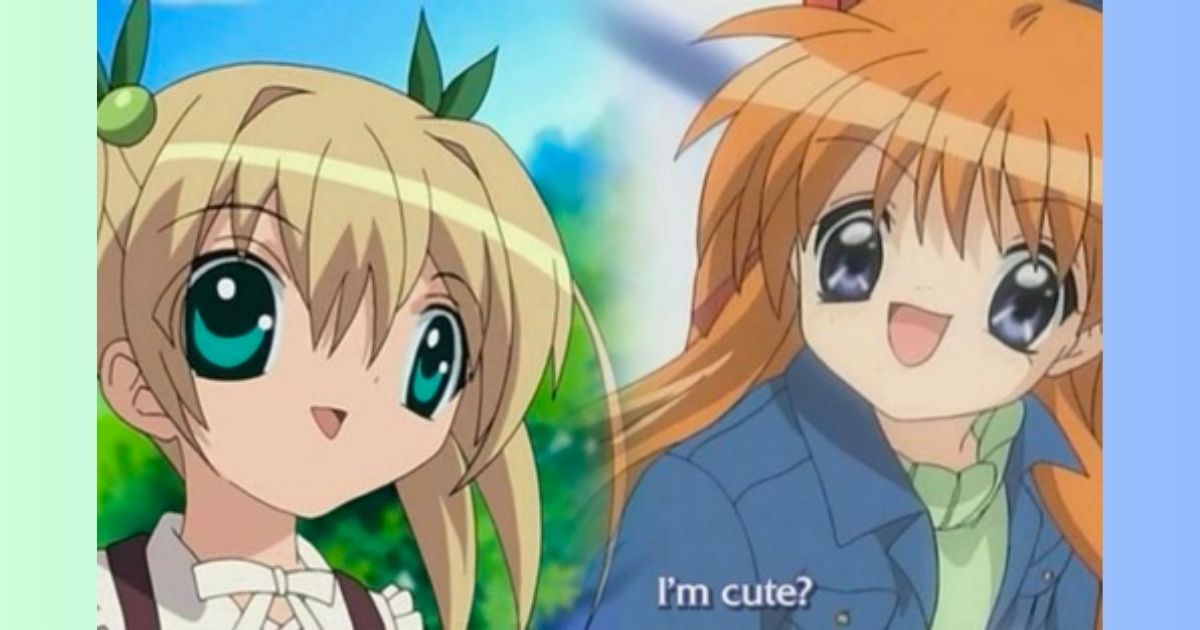
This adaption, while beautiful in its own right as a charming denizen of the digipaint era of anime, wouldn’t be considered a particularly faithful adaption of its source. The result feels slightly rushed, both in execution and in run time, with 13 episodes and one OVA (Original Video Animation) being used to host what was originally a sprawling multi-part story. That said, shout out to FanDub Central who are currently fandubbing this version in a way that really captures that old 2000s ADV English VA vibe.
The second attempt at an anime, and the one that is far more well-known in English-speaking countries, was 2006’s KyoAni Kanon adaption. For those that aren’t as familiar with anime studios, KyoAni, or Kyoto Animation, is one of the most iconic anime studios of the 2000s and 2010s, with some notable works being Clannad, Violet Evergarden, and Free! Iwatobi Swim Club, among others.
With all of this success both in Japan and internationally with the burgeoning western anime market, Kanon saw a wide array of releases, including adult light novels, drama CDs, figures, gashapon toys, a manga, and even a radio show called Kanon ~ The Snow Talk Memories which was developed to promote the Dreamcast port of the game in the year 2000. I’d also like to take this moment to shout out the Ayu Tsukimiya “Uguu” Disc, which I uploaded to Archive.org a few months ago. It’s exactly what it sounds like.
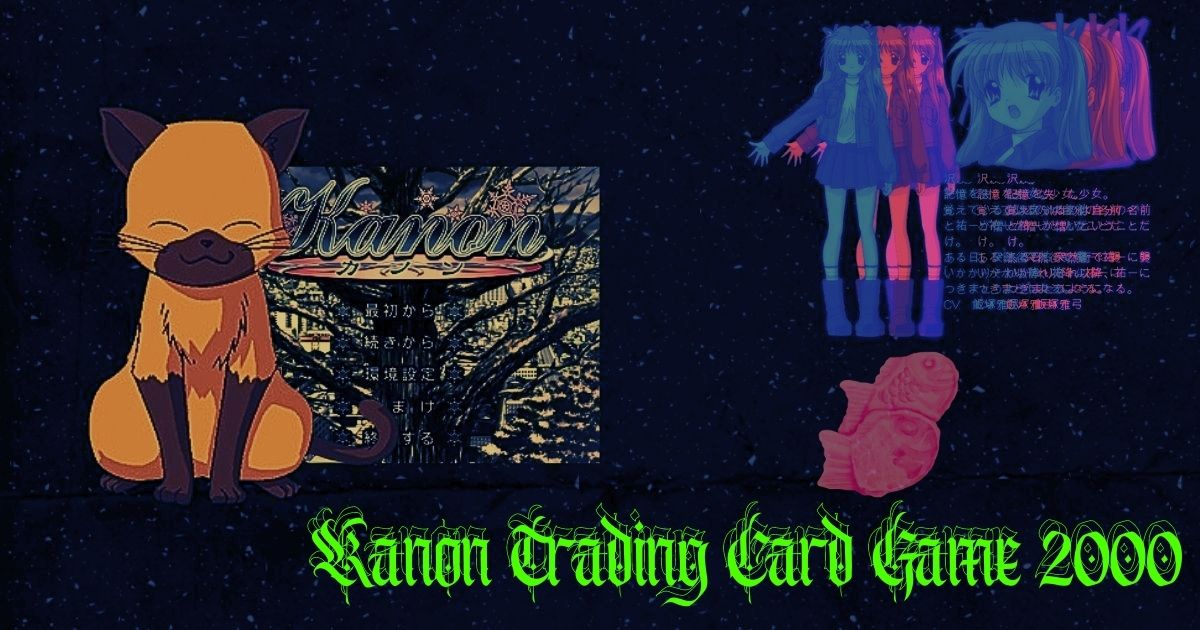
The Mystery of the Kanon Trading Card Game
Despite all of this popularity and the strangely wide reach of the game’s mascot character, Ayu Tsukimiya in Japanese pop culture, there’s still something mysteriously lacking in the archival of Kanon in English-speaking countries. This isn’t too surprising for your standard late-90s VN or early-2000s game, but with something like Kanon as the start of Key/VisualArts’ legacy as a juggernaut in the VN industry, it feels somewhat noteworthy.
Much of the discussion regarding particular pieces of merch or additions to the game’s cultural legacy is generally relegated to old forum posts from the time to the point that a lot of things that can be found on Japanese auction sites have little to no other digital footprint outside of them, doomed to obscurity forever.
It is in this odd quagmire of half-remembered media that the Kanon TCG resides. As a Y2K release, the Kanon Trading Card Game was released at a time when the internet was already a relatively well-established part of life, yet so little of its existence has been catalogued outside of a handful of Japanese Web 1.0 fan sites. That said, one such site, “Juggernaut’s TCG Catalog” offers a considerable amount of insight into how the game operates and what the rules are.

Kanon TCG: What is the Objective?
To quote the translated TI Tokyo site circa December 7th, 2000 I managed to hunt down on the Wayback Machine:
~
“Kanon TCG” is a cosplay battle card game in which characters appearing in “Kanon” wear costumes of their choice, borrow the power of the game’s famous scenes and items, and fight. You will fight with them and aim for your own miracle fulfilment (happy ending) (= victory).
~
As a two-player competitive card game, Kanon TCG puts the player in the role of a god who uses the manipulation of miracles to influence the life and future of the characters portrayed on the cards. This approach mirrors the themes in many of Key’s early visual novel works, with the most well-known use of “miracles” through character routes likely being Clannad and Clannad: After Story through which this idea of miracles was worked into the anime adaption’s storyline.
The win condition can come in a variety of forms. So, to achieve victory against your opponent, one of the following goals must be met:
- You earn 7 or more victory points.
- Your opponent’s deck runs out (they can’t draw when they’re meant to).
- You eliminate all cards on the opponent’s field.
- You satisfy the victory (opponent’s defeat) condition described on the specific card.
In other words, you can either win Kanon TCG by points or by creating conditions in which the other player can no longer continue playing. Whilst the framing of the game with the player being a god creating miracles is certainly unique, the actual turn-by-turn mechanics of this are quite simple..

What Do I Need to Build a Kanon TCG Deck?
A deck in the Kanon trading card game will generally have 60+ cards, with no more than three cards of the same type in each deck (with the exception of the card “Baseball Wear Ayu” which allows up to nine of the same card).
Initial Basic Setup
Player Life: None.
Victory Points: 0 points.
Starting hand: 7 cards. The upper limit is also his 7 ( adjusted during his turn ).
Mulligan: When you have 1 or fewer permanent cards in your hand, you can voluntarily do this once.
First Draw Restriction: Yes ( The first player draws from the first turn, but the number of cards at that time is 2).

How the Kanon TCG is Played
Note: As you read this, keep in mind that much of the information I have for this is machine translated, meaning that some issues may arise from not having a grasp of the original Japanese.
The Flow of the Game
- Starting the Game
- Decide whether to attack first or second.
- Shuffle each deck.
- Each draws his 7 cards from his deck.
- Mulligan if necessary.
- Arbitrarily place up to 3 of his character/item cards from your hand on the field (each can only
- be placed in each location at the front).
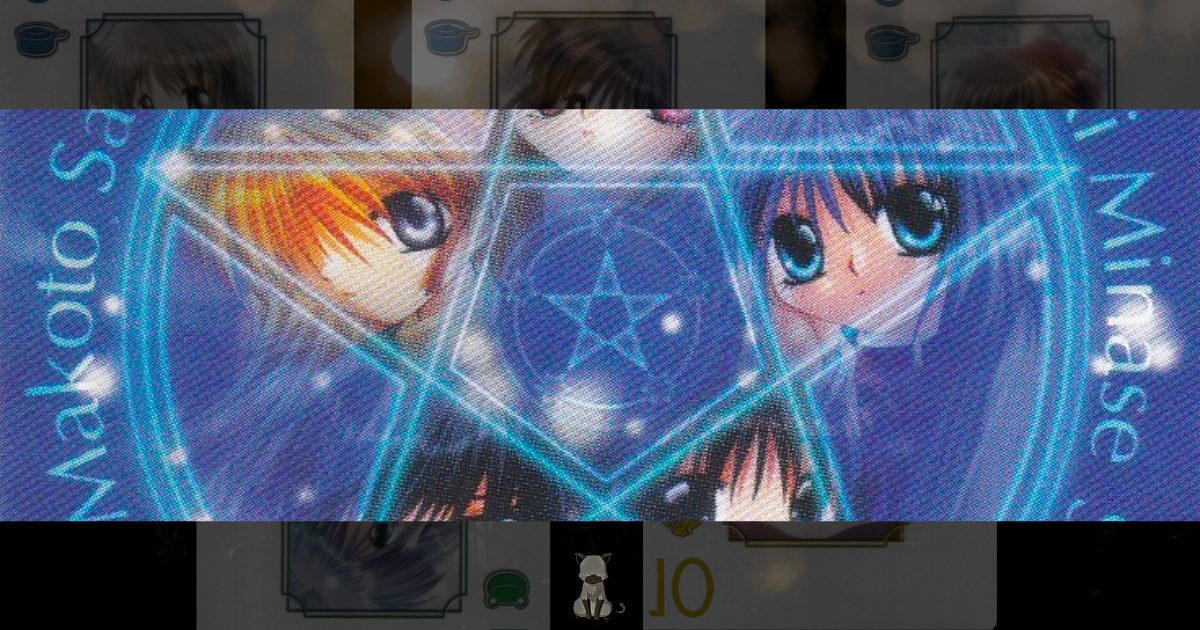
The Basic Progression of the Game
The game ends when one of the players repeats a procedure called a turn and one of the players meets the victory conditions.
Your Turn
Draw Phase
Draw 3 cards from the deck.
Card Set Phase
Arbitrarily place up to 3 character/item cards from your hand on the field ( follow the card placement method described later ).
Pay Cost Phase (Part 1)
Randomly reveal a character/item card in your field.
*Note that item cards require a cost to turn them face up.
Battle Phase
Arbitrarily battle (described later) (once per turn).
What Does Battle Look Like?
▽ Offence character location selection step
- Decide which card to attack from among those present at the front.
- If the specified card is face down, it is turned face up at no cost.
- If the target card disappears on the way, the cards on the line are stacked in order, and as a result, the card existing in the specified location becomes the target of the battle.
▽ Defence character location selection step
- The opponent’s card to be attacked is chosen from those present in the front.
- If the specified card is face down, it is turned face up at no cost.
- If the target card disappears on the way, the cards on the line are stacked in order, and as a result,
- the card existing in the specified location becomes the target of the battle.
▽ Pump-up step
*Note that events and special abilities cannot be used in the process after this step during battle.
If there is no card in the location where the battle is to be fought at this stage (the target line is empty), the battle is invalidated and processing is interrupted (the battle itself is treated as not having taken place).
- If the battle location card is face-down, it is forced to face up at no cost.
- If any of the columns consisting of 3 squares vertically, horizontally, and diagonally, including the
- location where both sides battle, are composed of cards with the same suit other than “Snowflake”,
- the target card can be optionally used at no cost. can be turned face up to declare the formation of the suit.
- For each completed row of suits, increase each Combat Strength by +1 as a suit bonus.
▽ Attack step
1: Judgement for Items
If the card to be battled is an item card with no combat ability, the battle will be lost unless the opponent has a similar card.
2: Judgement of Combat Power
Each of them uses the number in the column corresponding to the opponent’s attribute from the combat power list of their own card as the combat power (base value) in this battle.
Add modifiers such as events and suit bonuses to determine the final strength of each side.
Compared to the opponent’s combat power, the side with the greater value wins the battle ( if equal, it is a draw).
3: End of Battle
Place the cards that win the battle in your Victory Point Storage. The victory or defeat of the game is determined when the number of victory point cards reaches a specified value.
Losing cards and tied cards are discarded and sent to the discard pile.
Fill in the gaps of the cards that have been pulled out due to the battle.
- Pay Cost Phase (Part 2)
You can perform actions equivalent to the pay cost phase (part 1). - End Phase
If your hand exceeds the limit, discard cards to fit within the limit.
Declare the end.

Releases of the Kanon TCG
Given that the deck is quite sizeable for the game, naturally, a large number of cards needed to be designed, and for a game this obscure, there absolutely were.
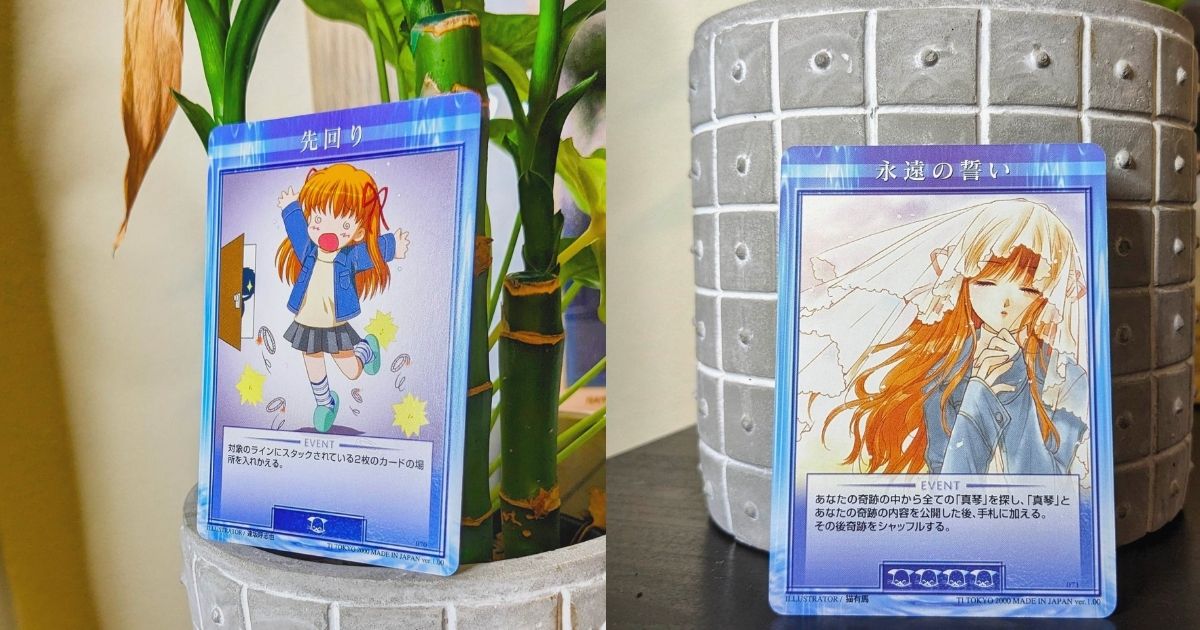
Spanning a team of artists and designers each with their own styles, the Kanon TCG offers a surprising amount of variety in terms of its visual identity, especially for the relatively homogenous world of early anime card games. Compared to many other card games of this kind, which will often favour existing art and screenshots from the games/shows over new art, the Kanon TCG had a surprising amount of time and effort put into its many different iterations. This is in part due to the dedication of the illustrators and passion for the Kanon brand around the time of its release, but also has a lot to do with the company at the helm of the project.\: TI TOKYO.
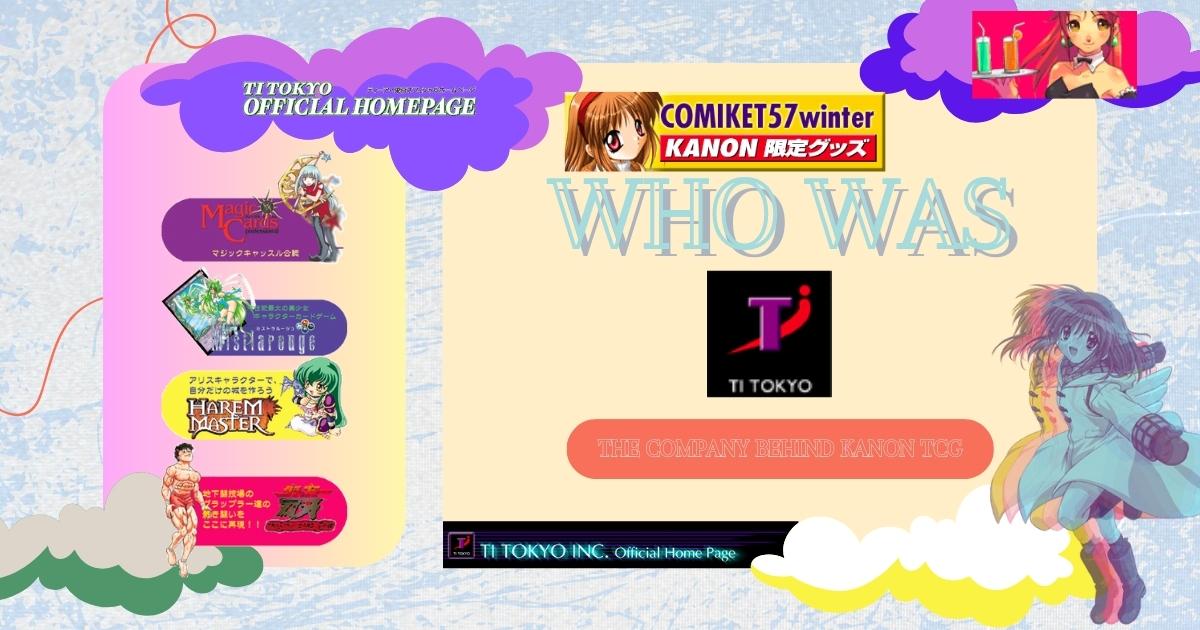
Who Was TI TOKYO?
Whether you’re aware of the Kanon Trading Card Game or not, there’s a chance Japanese card game fans are aware of TI TOKYO and their various releases. This is because, despite the company’s relatively short shelf life in the gaming space, their releases have gone on to be quite iconic in the world of anime trading card games. This is mainly due to the unexpected success and legacy of LeafFightTCG, or LEAF FIGHT!, a card game based around characters from the iconic and influential visual novel developers, Leaf. More specifically, Leaf Fight was based on a small game released on a fan “Amusement CD” that was distributed to Leaf fans in the mid-to-late 1990s.
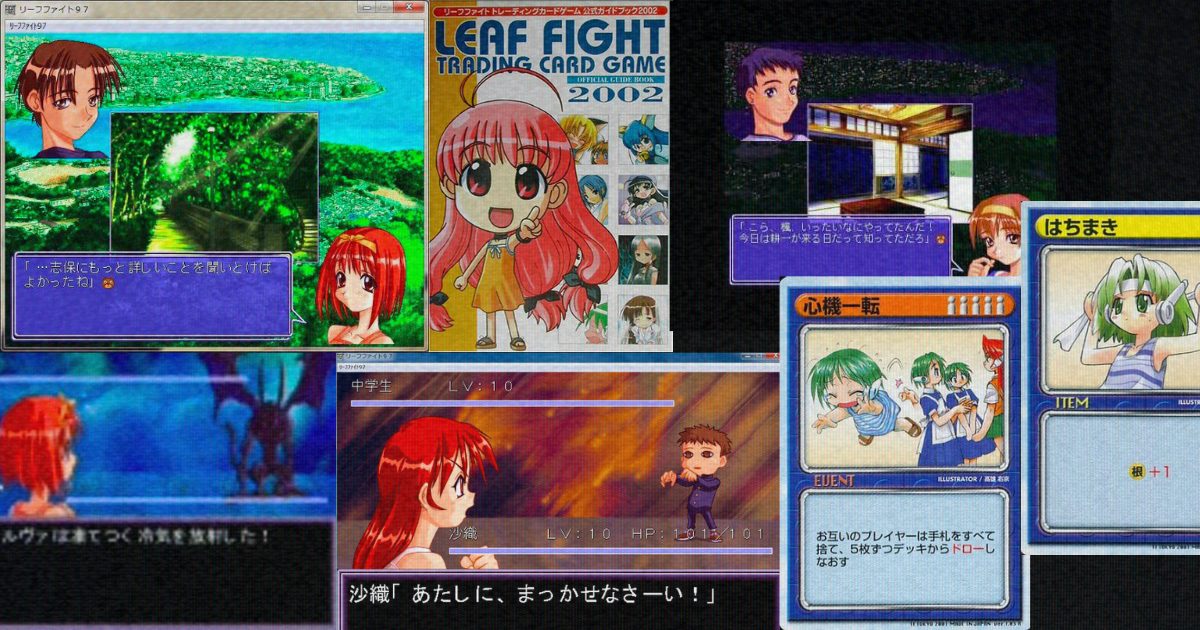
Leaf Fight ’97 spawned a card game that would get many expansions and new rulebooks throughout the late 90s and early 2000s, but it was by no means the only card game that TI TOKYO ended up releasing. Some TI TOKYO anime trading card games included:
- Kanon TCG
- Air TCG
- Gunparade March TCG
- LeafFightTCG
- Elements of Chaos
- Baki TCG
- Rumbling Angel
- Harem Master
- Mistlarouge Trading Card Game
- “Magic Master” Magic Card Pro
Each of these could get their own deep dive, as many of these games have been lost to time, especially in the western world where many of them were based on franchises never officially released in English-language regions. However, that is for another time, and we will keep our focus on the TI TOKYO anime trading card game of the hour, Kanon TCG.
Promotions & Comiket
As one of Japan’s most beloved conventions for doujin, fan works, and indie projects, Comiket made a fantastic base for something like the Kanon TCG. Starting at Comiket 57, which was hosted on December 24th, 1999, Kanon and its various incarnations would begin to have a large presence at the biannual con. This is where the majority of the TCG’s various promo materials come from starting around the time of its release in July 2000, sometimes as purchasable items, and in some cases, as prizes for Kanon TCG competitions.
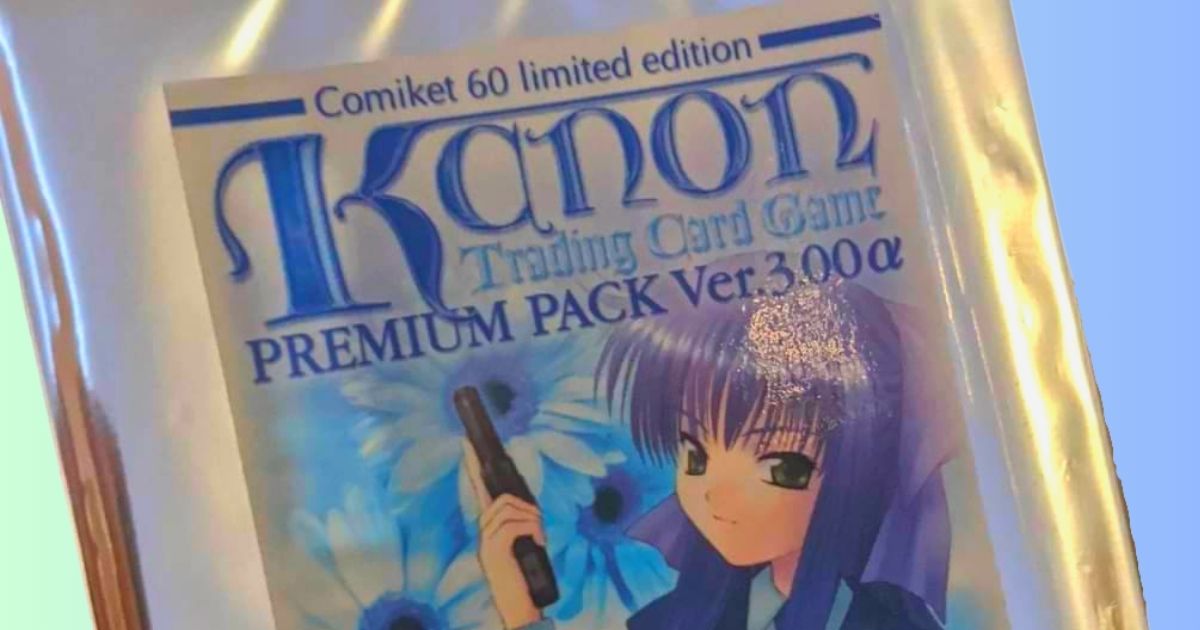
This also includes Version 0.9β (beta version) of the TCG, an extremely rare set that I have not been able to find definite pictures of in terms of packaging, despite having many of the promotional cards. With that said, in the time of writing and researching this article, I connected with a fellow card enthusiast, a Twitter user by the name of @hm_kani. Thanks to their help and support, I ended up with far more than I could have hoped for regarding the Kanon Trading Card Game and its beta cards. However, what put me onto his archival work was not his Kanon cards specifically, but rather, another set of similar but far more mysterious Kanon trading cards…
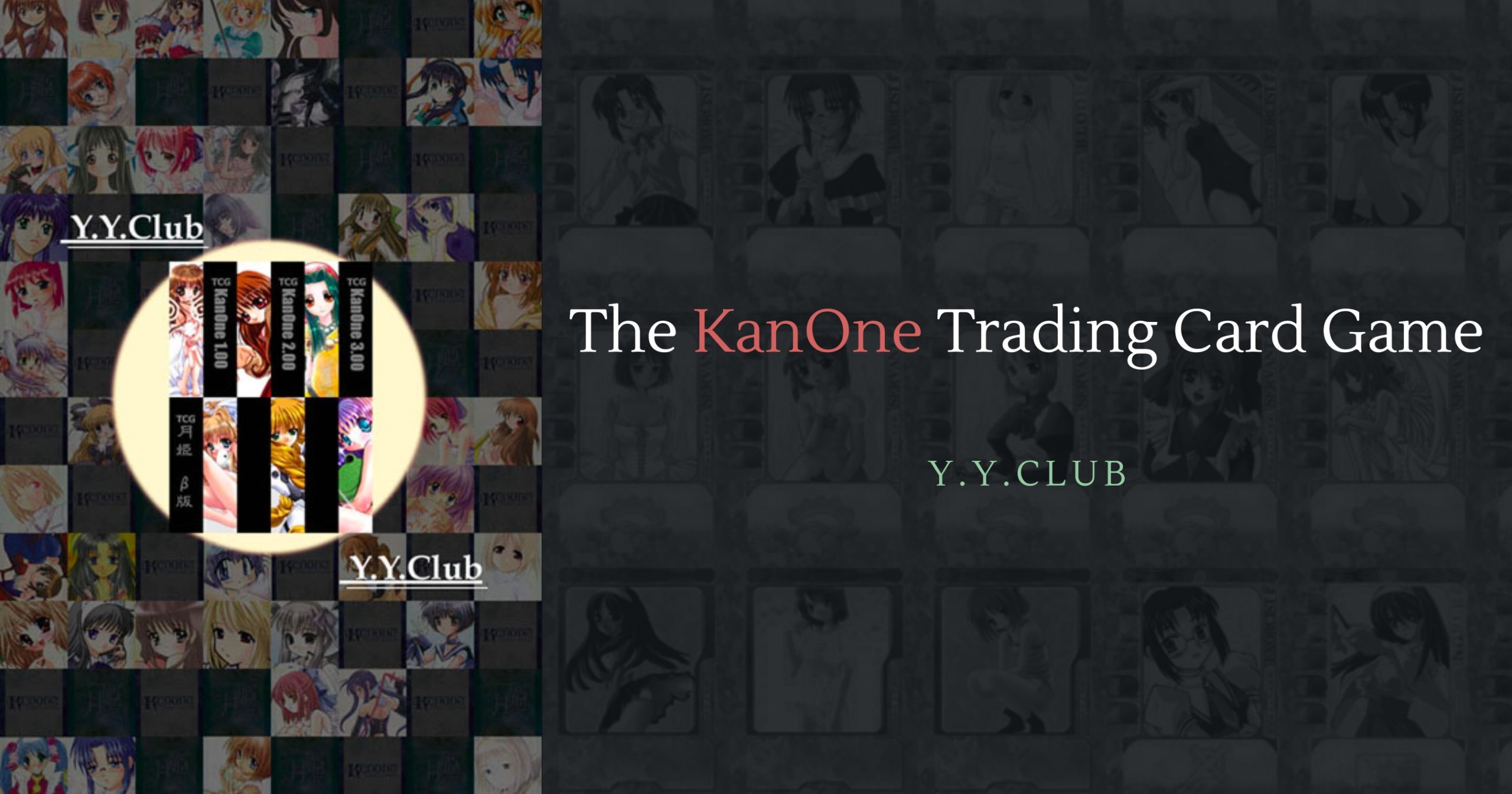
KanOne Trading Card Game: A Mysterious TCG Based on a Mysterious TCG
This is where we really start getting into the weeds of a rabbit hole that I have spent the past year of my life casually obsessing over. Y.Y.Club as a doujin group has existed for quite some time, with the WayBack Machine first capturing their KanOne Trading Card Game official site, kanone.jp, on October 27th, 2001. This puts the KanOne game as being released as early as the Kanon Trading Card Game 2.00 sets, meaning the group worked incredibly quickly to copy the same format and design as the Kanon TCG for their KanOne TCG.
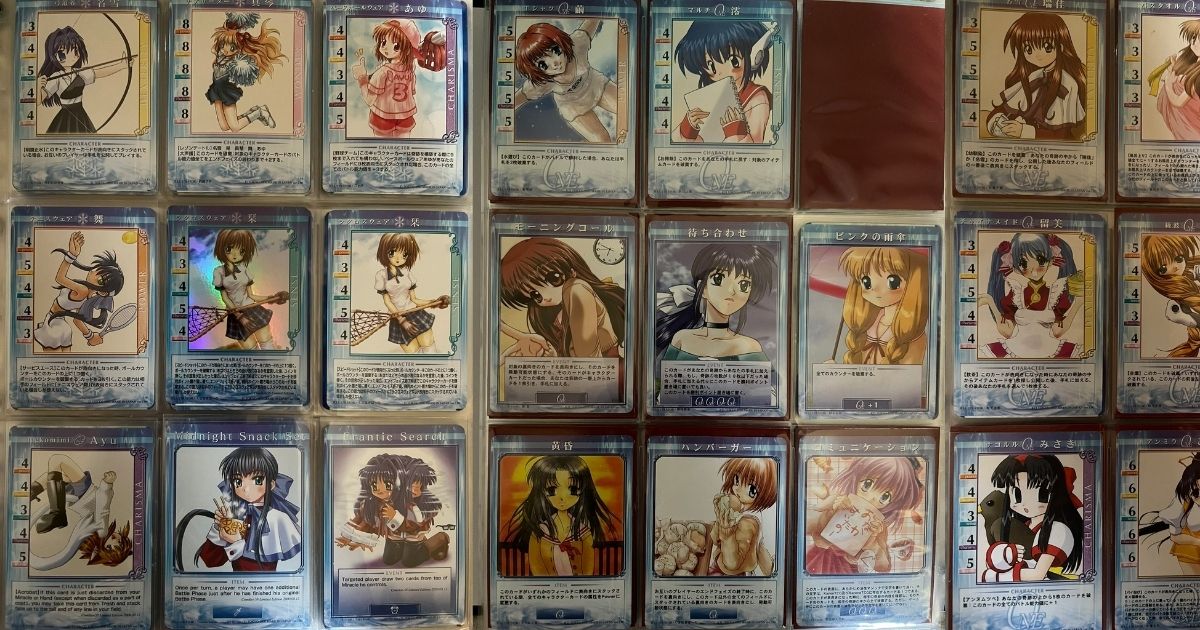
Some of the more interesting cards to take note of in this set are the ones that are translated into English, a trend that would continue into some later promo sets for reasons I cannot fully explain. However, as the name suggests, the shift from the standard Kanon game is the inclusion of other characters from Tactics and Key/VisualArts’ back catalogue of games, with the name KanOne being a play on Kanon and 1998’s One: Kagayaku Kisetsu e. Surprisingly, even outside the Wayback Machine, there are one or two existing sites that continue to have card lists for this fan game. This, despite the fact that there doesn’t appear to be any existing record of the cards being made or photos taken of them outside of two Twitter users, one of which is our source above.
This begs the question of who made KanOne, and shockingly, this is a question with a readily available answer.

Who Were Y.Y.Club?
Little is known about Y.Y.Club as a group, given that much of the early internet’s Japan-exclusive doujin circles and their websites are lost to time. However, what is known is that they were a group primarily known for their hentai, and a lot of it. When I look up their name on Google, little of their history exists outside of sites I absolutely do not feel comfortable clicking on a work computer. Interestingly, outside of their four whole releases of the KanOne TCG, they also released a Tsukihime TCG, which got both a beta and a standard release. All of these were distributed through Comikets, same as the Kanon TCG, and technically their bootleg game got one more expansion than the official release, as long as you don’t count the AirTCG.
With that said, let’s take a look at a few of the major Comiket releases of Kanon TCG.
The Kanon Congratulations Card
Another strange Kanon TCG oddity is the Piro “CONGRATULATIONS!” card which could be mailed in to receive an Ayu angel wing backpack deck box. The card and its loose translation can be found below:
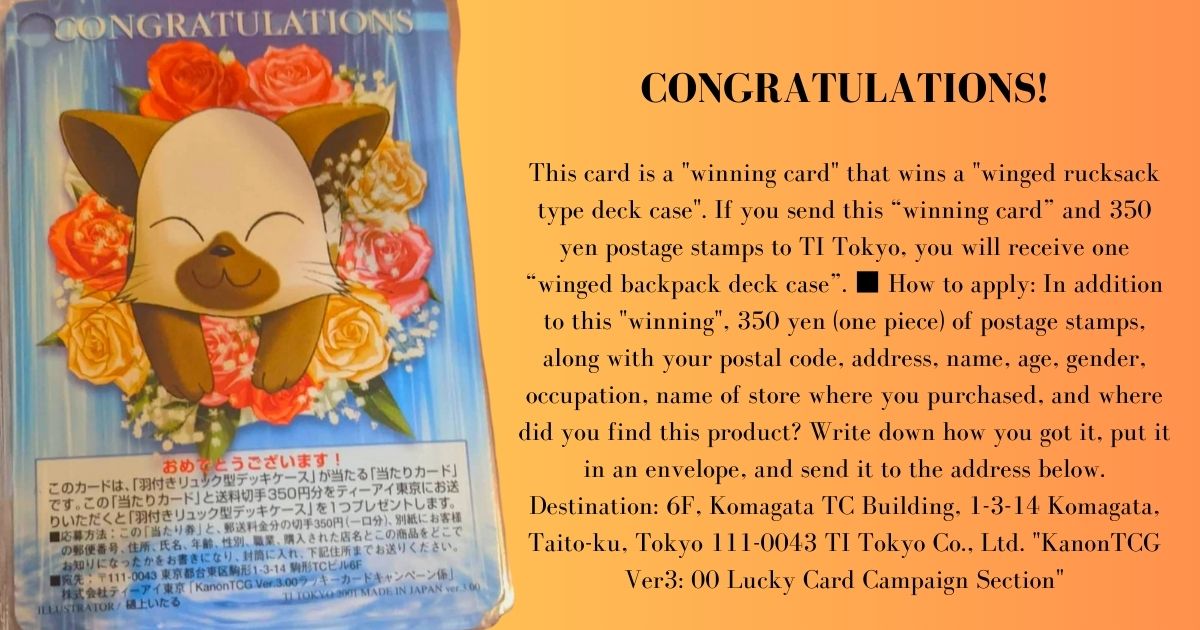
As you can see, this is from the Ver3.00 campaign, the expansion released on the 31st of August 2001 with a new set of boosters and starter decks. This would also mark the final release of the core Kanon TCG expansions, alongside the Air expansion and starter deck that was released in May of that same year. The prize for this particular card, a deck box in the shape of Ayu’s signature angel wings backpack, can be seen below:
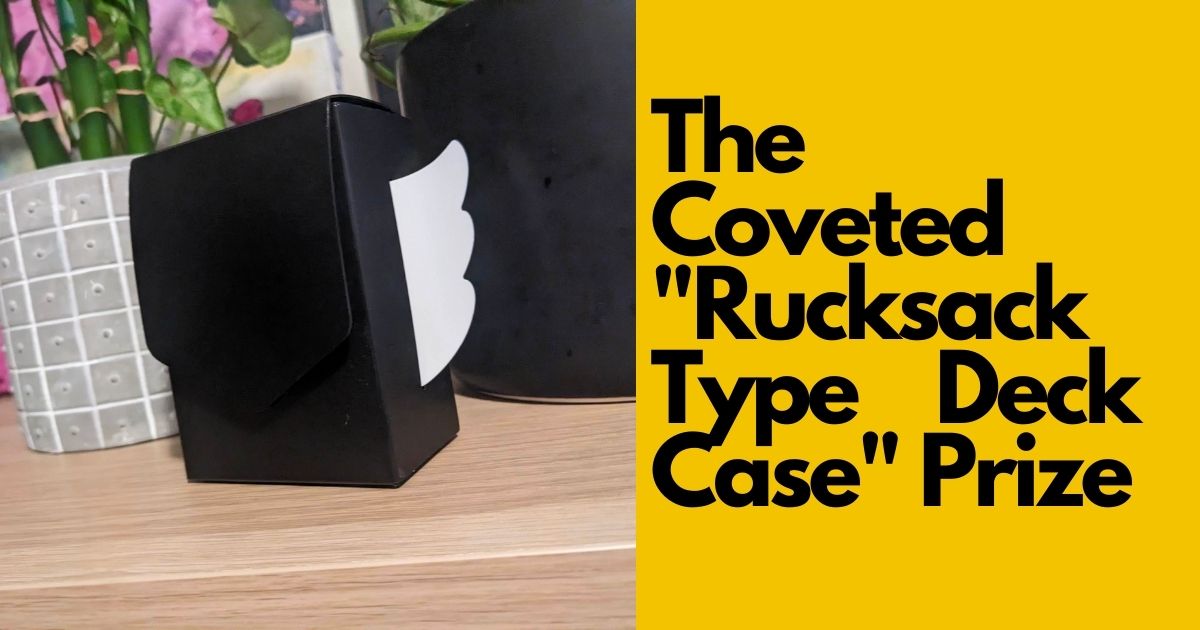
Official Kanan Releases and Expansions
Kanon TCG Ver1.00
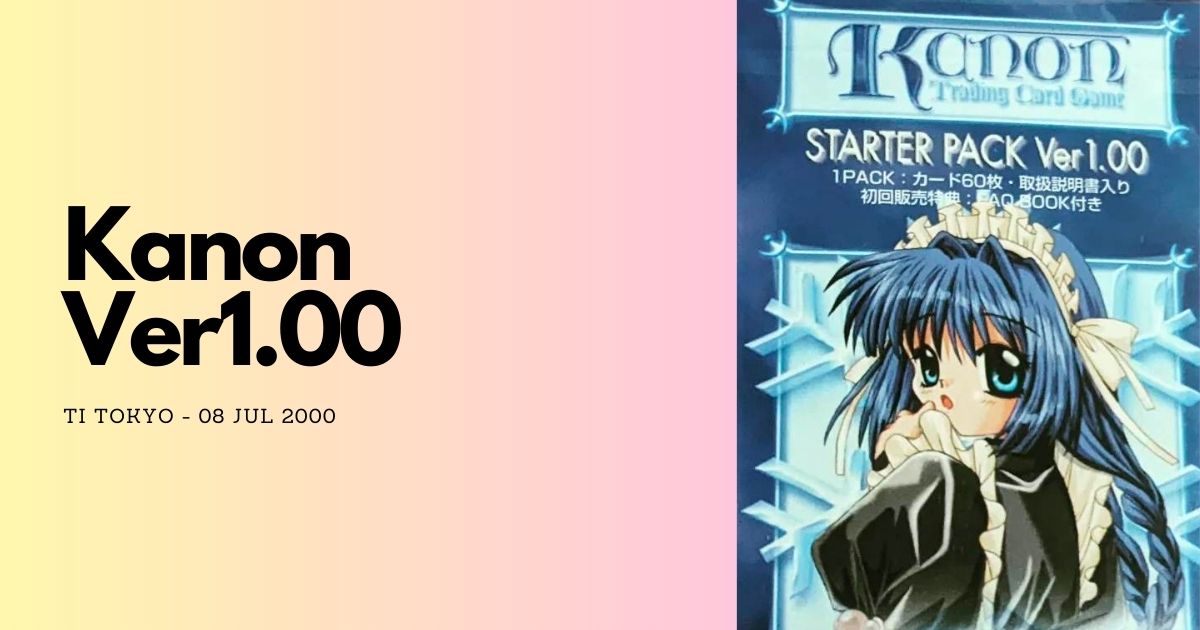
This is the base set and the first official release after the beta. This would be the official introduction to the Kanon TCG that made it to stores and would be the only version of the game until the Ver2.00 release early in 2001.
Kanon TCG Ver2.00
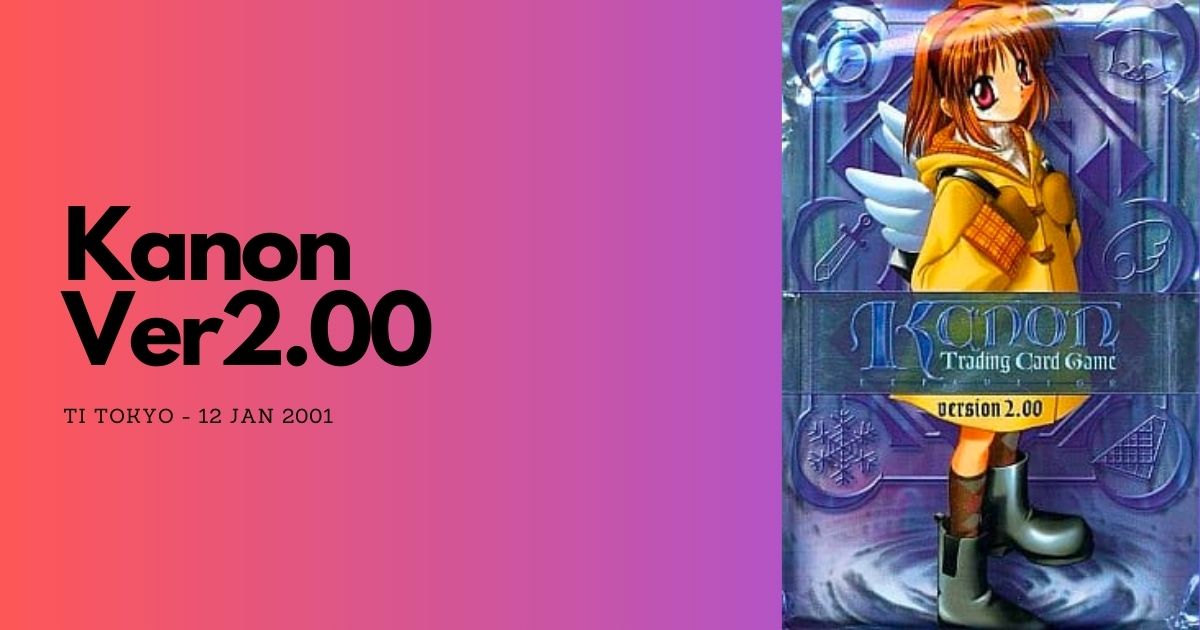
An update that expanded the card set and broadened out the game enough to get a new rulebook release, the Ver2.00 booster was actually the first image I found that led me down this rabbit hole in the first place. It’s also where a lot of the difficulty in timelines comes from, as all evidence I’ve found suggests it was released a month before the updated Ver1.01.
Kanon TCG Ver1.01
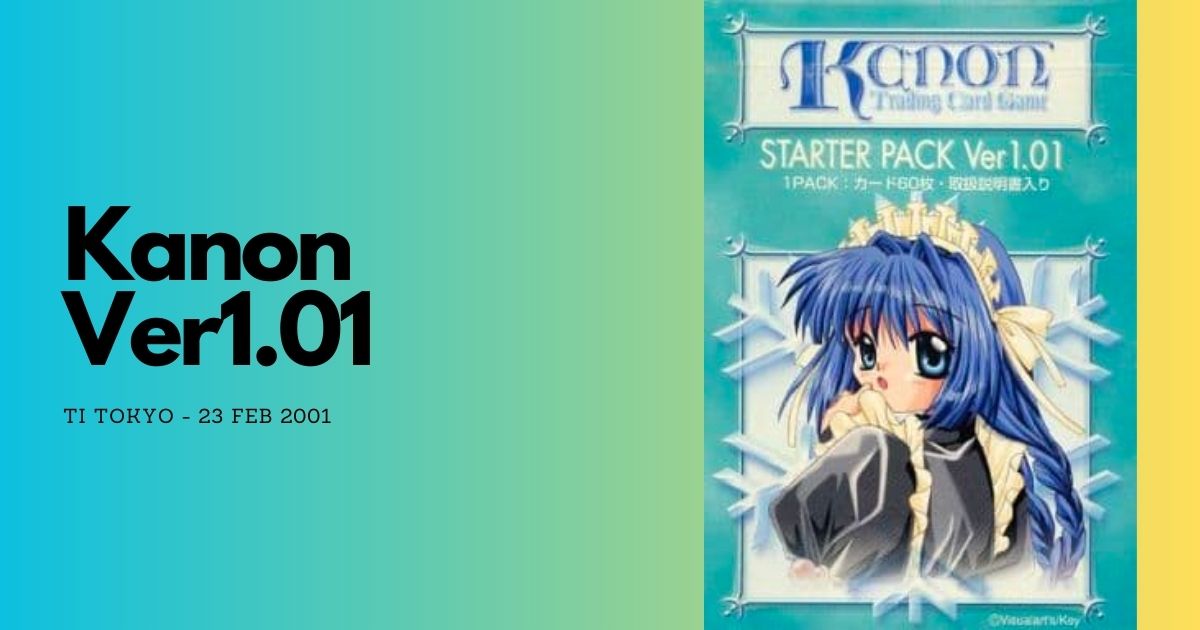
Released approximately 7 months after the original, Kanon TCG Ver1.01 kept the same design as the original but with a lighter colour. For those who are considering collecting the TCG, this is the set you are most likely to find on auction sites in my experience.
Air TCG Ver1.00
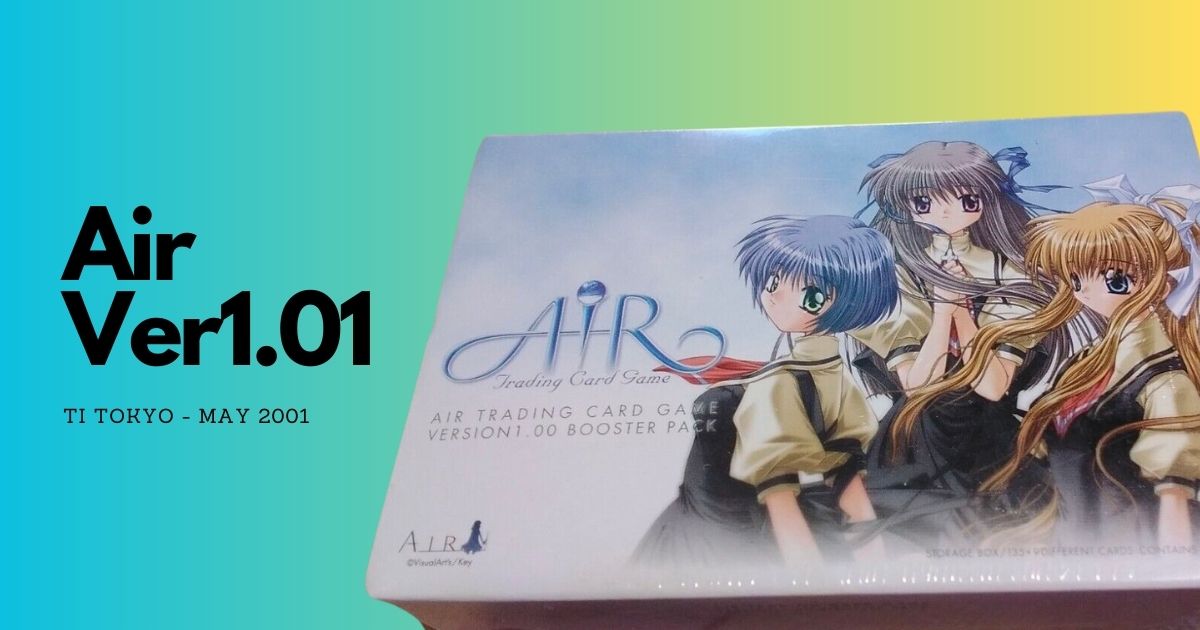
The most interesting change to the dynamic of Kanon TCG was the introduction of an Air expansion. Air, which followed Kanon as the second game to be released by Key/VisualArts, shares many stylistic similarities with its predecessor, including its lineage as an eroge game which would then be made all-ages in subsequent releases. So, when expanding out the TCG, it made for a good fit design-wise, altering the game and broadening it out to, at the time, the only two Key/VisualArts VNs that had been released.
Kanon TCG Ver3.00
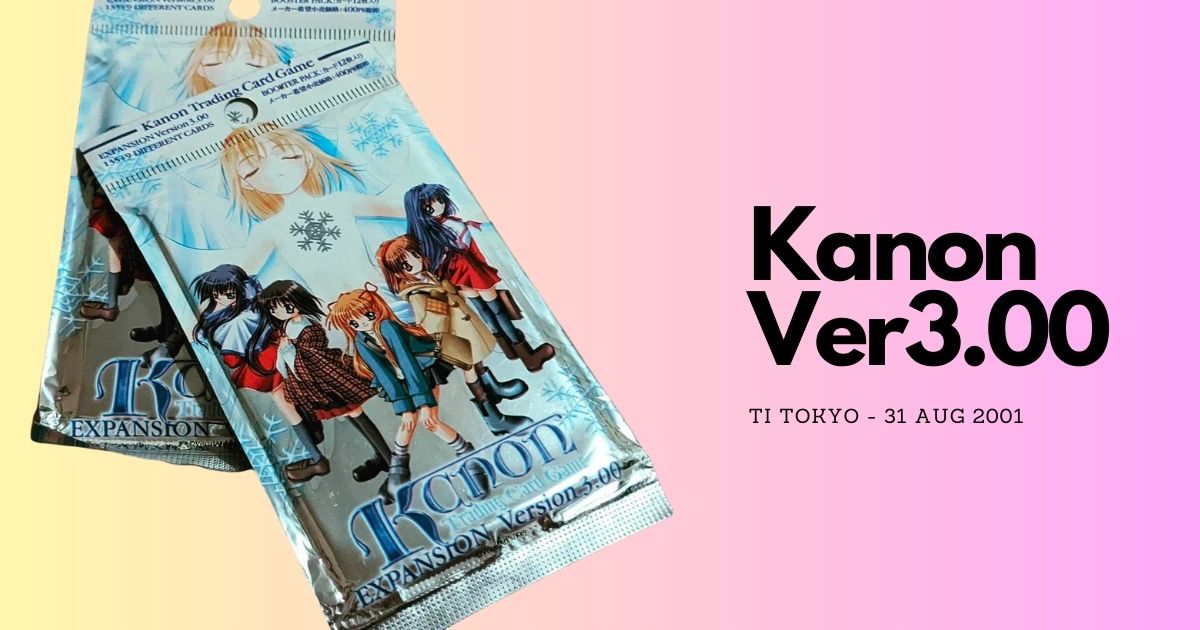
As someone coming from the English-speaking side of the internet, finding imagery of these expansion boosters from Ver3.00 was, initially, nearly impossible. Luckily, thanks to some fortuitous bids on some Japanese auction sites, I managed to get my hands on a large bundle for exceedingly cheap.
Coming in at the tail end of 2001, Kanon TCG Ver3.00 was the final expansion to the game, with no subsequent expansions being seen as TI Tokyo slowly shifted its focus away to other things. The set offered a significantly expanded card list all based around Kanon, with no continuation of the Air card line from the previous expansion.
Kanon TCG Guidebooks
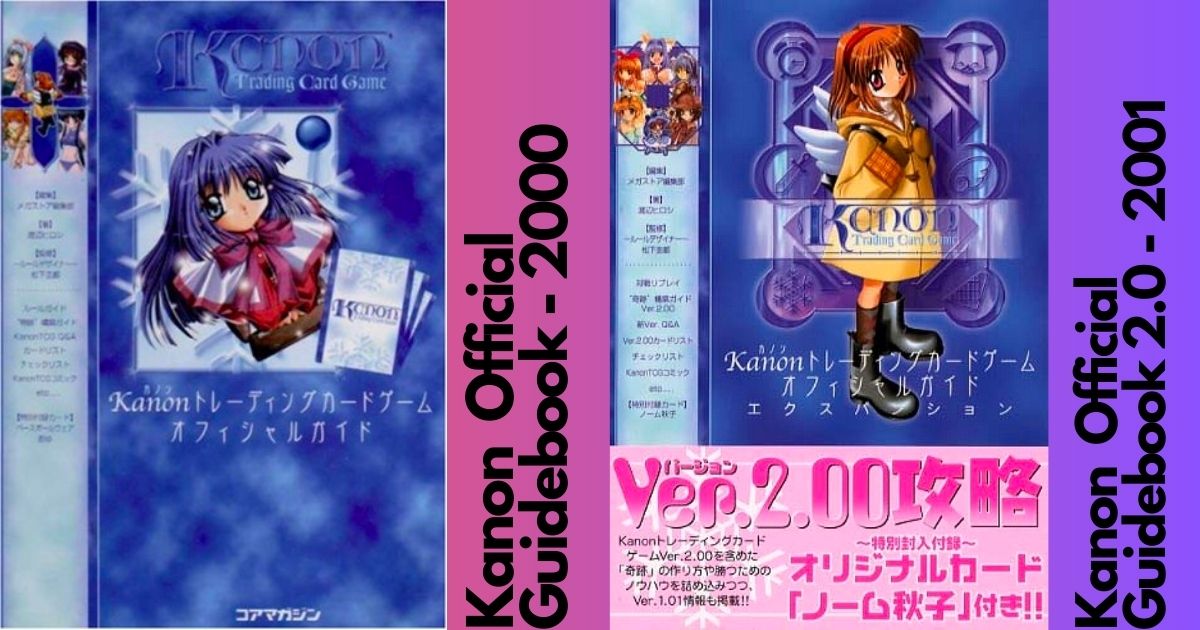
With both 1.00 and 2.00 of the Kanon card game came rulebooks with each providing a slightly different view of the game’s meta based on the new cards that were released between books. Each came with promotional cards, so if you come across these in the wild, which is actually easier than with most Kanon TCG products in my experience, make sure to check inside the back cover for an envelope. The original has Nayuki Minase on the cover, whilst the 2.00 variant shows Ayu Tsukimiya.
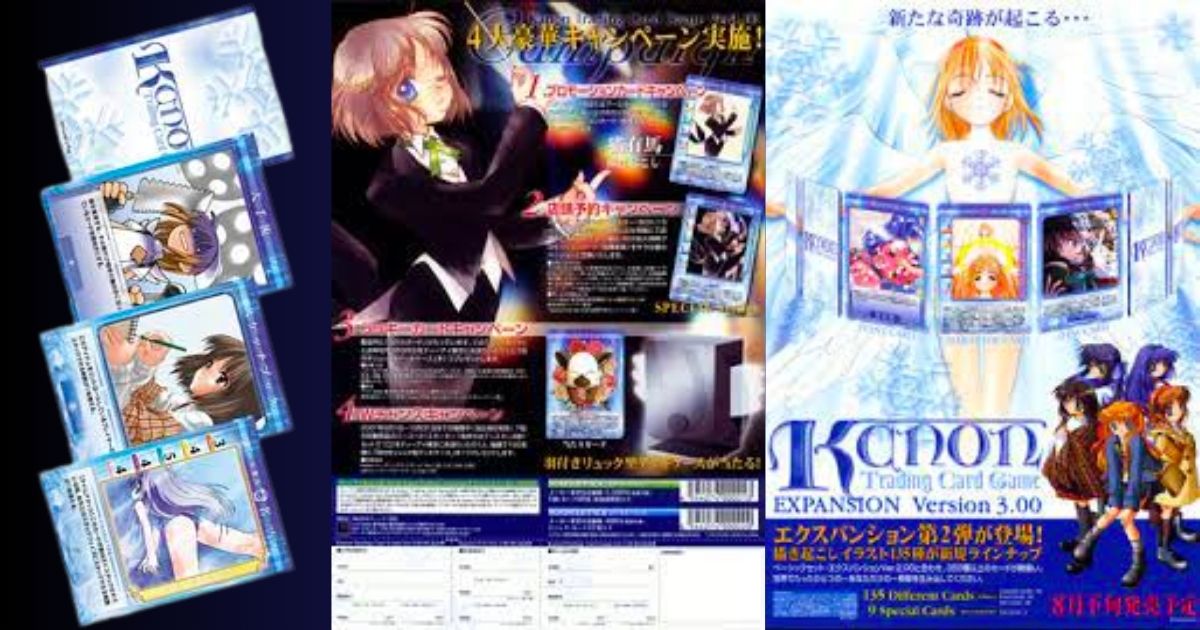
Dead Trading Cards & the Strange Allure of the Void
If you’ve made it this far down, chances are you are wondering why in the world someone would go to this much effort for a card game nobody has heard of based on a weeby “moe” visual novel from over two decades ago. It’s a good question, and one I’m not sure I can answer with much in the way of clarity, but I’ll certainly try.
As someone who has been perpetually online since the age of 10, much of my experience of the world is alongside technology and the development of digital spaces. As much as I remember running through the trees and fighting friends with sticks as a child, I also remember Runescape and Gaia Online, exploring these worlds that seemed incredibly mysterious to a mind that hadn’t fully grappled with the idea of why they were made.
The thing is when you have your memories attached to something like the internet, when the spaces you were once in become outdated, you quickly find much of what you connected those old experiences with gone too. I know a lot of people that feel a twinge of sadness when they remember an experience they can no longer have due to the death of flash, or the closure of a particular fansite they would paw over for hours in the night. This sort of loss and failure of archival is tough, but it also creates a sense that the internet is an archeologically fascinating place, with layers of sediment from what came before now creating the foundation for what is being built atop its bones.
When I started looking into this TCG, the thing that grabbed me wasn’t that it was an amazing game that should have been the biggest hit of all time. Rather, it was that in the past 24 years, there had not been a single good, cohesive resource made about it on the entire English-speaking side of the internet. It was a relic and one that had very little chance or reason to resurface. As I delved further into this world with Wayback Machine sites and old magazines, I found more and more of these card games that just existed out there with very little to document their existence, and in a world where every piece of information is there in front of you at all times, having something that hasn’t had that treatment is, at least to me, fascinating.
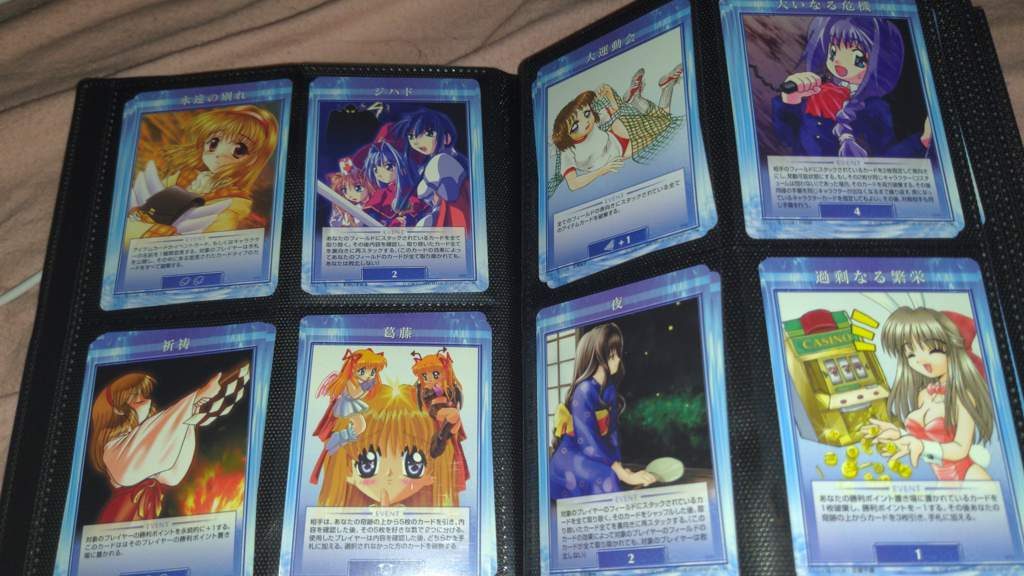
@kanontcg – A Dead Instagram
For those that know anything about the Kanon TCG and have somehow stumbled onto this piece, you may have also been aware of the Instagram page which I once used to archive my weird little journey with this game. The page is gone now, it was automatically deleted by their system for reasons I was not told, and that was the end of that. Still, I just wanted to acknowledge that I did that and that it was fun. I liked archiving all of this, and it was the end of that Instagram’s life that led me to write this article, so something came from this weird experiment in obsessive Web 1.0 digging.
I’ve also noticed in the time after I started posting about this TCG that a few more people have surfaced and started posting pictures of cards and stuff, which is really amazing. I love all of this, and if you still want to send me stuff about it, or just talk, you can find me at @fantasyexeband on Instagram.
Kanonclusion
This article could go on forever.
I could have spoken about each individual game mat and promotional deck box and card and everything, and maybe one day I will get the chance to do that. However, for now, I think the point of having this out there is simply that learning about weird stuff is fun. I’d never played nor seen Kanon when I started all of this during the pandemic, and having this now be something that is just out there is something that I am never going to stop finding funny. I highly recommend allowing yourself to do dumb stuff like this every once in a while. It may seem like a complete waste of your time on this Earth, and you may end up writing over 4000 words about a Y2K anime cosplay card game, but to me, there’s something beautiful about that.
What I’m trying to say is that Kanon is pretty good, and someone should write one of these about Leaf Fight because it’s not going to me, but I would absolutely read that. Really just any card game by TI Tokyo, like what’s up Gunparade March? The Baki TCG? All absolutely wild.
Uguu.


